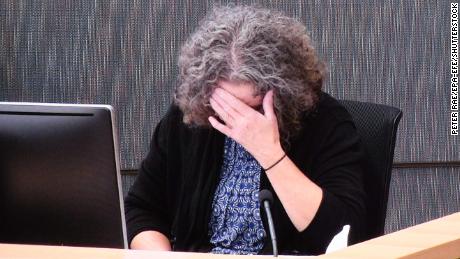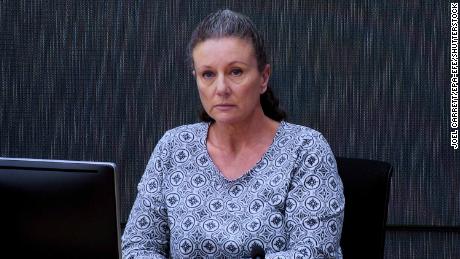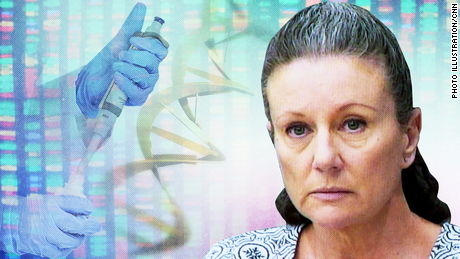
As part of that inquiry, Folbigg's legal team approached Prof. Carola Vinuesa, co-director of the Centre for Personalised Immunology at Australian National University, to ask her to sequence the children's genomes to see if there was a genetic mutation that could have caused SIDS.
"There was a chance -- even though it might be a long shot -- that (Folbigg) was carrying something that might be passed on to the children," Vinuesa said. "To my knowledge, this is the first case in which a court (anywhere in the world) has used whole genome sequencing to find evidence of a cause of death."
During the inquiry, Vinuesa and her team sequenced Folbigg's genome and found a previously unreported variation in the CALM2 gene which controls how calcium is transported in and out of heart cells.
Studies have found variations in the CALM 2 genes can cause heart problems in young children, meaning they are
among the best recognized causes of SIDS and SUDC.
When they sequenced the genomes of all four children, they found both daughters carried the same CALM2 mutation as their mother.
After the inquiry had closed, more evidence came to light, prompting Vinuesa and her team to write to the judge telling him it was likely the daughters died as a result of the variant. Despite the new finding, Judge Blanch opted not to reopen the inquiry. After taking all the evidence -- including the diaries -- into account, Blanch said he remained of the view Folbigg had smothered Sarah and Laura.
New developments
Last November, scientists published even more compelling evidence.
Led by Danish professor Michael Toft Overgaard, a team of experts across six countries found the CALM2 variant in Folbigg and her two girls could cause disease -- just like other CALM2 variants.
They concluded the variant altered the girls' heart rhythm, making them susceptible to heart conditions -- particularly given the medication they were given. Sarah was on antibiotics for a cough, while Laura was being treated with paracetamol and pseudoephedrine for a respiratory infection shortly before she died. Laura had inflammation of the heart when she died to the extent that three professors said they would have listed it as her cause of death.
"We consider the variant likely precipitated the natural deaths of the two female children," the researchers
wrote in a study published in November 2020 in medical journal EP Europace.
"To my knowledge, this is the first case in which a court (anywhere in the world) has used whole genome sequencing to find evidence of a cause of death."Professor Carola Vineusa
In both of the boys, scientists found other variations in their BSN, also known as Bassoon,genes -- one variant had been inherited from their mother, and the other likely from their father, although he refused to provide a sample to the researchers. When both copies of the BSN gene are defective in mice it can cause them to die young during epileptic fits. Scientists are still investigating whether this variant could have caused the two boys' deaths. Patrick experienced seizures before he died.
Only 75 people in the world are known to carry mutations in their CALM1, CALM2 or CALM3 genes that have been shown to be lethal in children. But while genetic mutations that cause SIDS may be rare in the general population, once a parent has a genetic mutation there is a high chance of them passing it on, Vinuesa says.
"In the end it's not about these variations being very rare in the world, it's about the chances of Kathleen meeting someone like Craig and having this combination of mutations between both of them. Once genetics come into play, statistics go out the window," Vinuesa added.
Vinuesa said the case shows that contrary to what was suggested at trial, there doesn't need to be one explanation for all four of the deaths.
"The pathology already told us there were different causes," Vinuesa said.
The research hasn't yet freed Folbigg, but it has already had an impact. Folbigg's lawyers launched a case in the New South Wales Court of Appeal, arguing that the commissioner of the 2019 inquiry incorrectly applied the law to his decisions. The genome findings also prompted a petition with more than 90 signatures to the New South Wales governor earlier this month.
"It is deeply concerning that medical and scientific evidence has been ignored in preference of circumstantial evidence. We now have an alternative explanation for the death of the Folbigg children," Prof. Fiona Stanley, who has been recognized for her work on child health, said in a statement at the time of the petition.
"The reality is, Kath's lost four children. And she hasn't been allowed to grieve as a mother should."Tracy Chapman
A spokesperson for Gov. Margaret Beazley said the state's attorney general is considering the petition and will advise her. According to New South Wales' Department of Communities and Justice, few people have ever received a pardon by the state.
Even if Folbigg is freed, her legal fight may not be over. She will need to go to the Court of Criminal Appeal to get her conviction overturned if she wants to clear her name -- and it will be another legal matter again if she wants to get compensation for the years she's spent in prison.
For Folbigg, the research offers some hope -- but it was also emotional for her to hear, says Chapman, who talks to Folbigg every day.
"You're being told potentially the thing that you carried has been passed onto the children. So that's emotionally quite heart-wrenching," Chapman said. "The reality is, Kath's lost four children. And she hasn't been allowed to grieve as a mother should."
Science in the court room
Folbigg's case is part of a bigger picture -- a growing understanding of SIDS, a changing view about what multiple deaths in a family means, and a wider criticism of how science is presented in the courtroom.
Much of Folbigg's conviction was based on a maxim credited to Meadows that three infant deaths are murder, unless proven otherwise -- a maxim that had already started to draw skepticism.
Two women in the United Kingdom convicted on the basis of Meadow's maxim had their convictions overturned in 2003.
In one of those cases, the appeal
judge said: "Unless we are sure of guilt, the dreadful possibility always remains that a mother, already brutally scarred by the unexplained death or deaths of her babies, may find herself in prison for life for killing them when she should not be there at all.
"In our community, and in any civilized community, that is abhorrent."
In a similar case to Folbigg's, Australian woman Carol Matthey was accused of murdering her four children between 1998 and 2003, but the case against her was dropped due to a lack of evidence -- even though the same experts that testified against Folbigg were set to do so against Matthey.

"(Folbigg) could very well be innocent," Matthey
told the "60 Minutes" TV show. "Medical experts get things wrong, police get things wrong."
Gary Edmond, a law professor at the University of New South Wales who is an expert in trial evidence and forensic science, said it was unfortunate Folbigg went to trial when she did. If she was tried a few years later, when the doubt over Meadow's maxim was better established, the courts might have been more cautious about admitting the expert evidence used to convict her, he said.
But even now, the way Australian courts handle evidence is outdated -- and lagging behind United States, Canada, New Zealand and the United Kingdom, Edmond said. While other jurisdictions assess whether science is reliable before it comes to court, Australia's system leaves it up to the juries to decide what's valid. That's a problem because juries don't have enough knowledge to make complex scientific judgments, Edmond said.
Folbigg's lawyer Rhanee Rego -- who has been working on her case for almost five years unpaid -- agrees courts need to be careful about which experts are allowed to give evidence. "I think that one of the biggest lessons we can take from this case is that we need to listen more carefully in the legal system to peer-reviewed and evidence-based science and medicine," she said.
Genetic answers
The advances in genetic testing -- including the findings in Folbigg's case -- could also help give answers for others dealing with the unexplained deaths of their children.
Vinuesa says it's likely that in the next few years, other families who have experienced SIDS will find a genetic mutation is to blame.
"We need to listen more carefully in the legal system to peer reviewed and evidence-based science and medicine."Rhanee Rego
"In most families where there have been SIDS deaths, nobody has yet gone back and sequenced the genomes of the children," she said. As molecular autopsies become more common, she thinks there will be more genetic explanations for otherwise unexplained deaths.
That could help families looking for answers -- and also help those worried about being targeted by the law.
"Many families live in fear, because they've had two or more children dying and they're worried that one day someone will be knocking at their door with some type of police investigation," she said. "We know now that when you have a genetic condition ... it's not rare."
Chapman says her childhood friend hopes her case helps other parents explain otherwise unexplainable deaths.
"It's not just about having Kath free," Chapman says. "The most important thing after Kath is freed is that this never happens to anybody else ever again."





Comments
Post a Comment